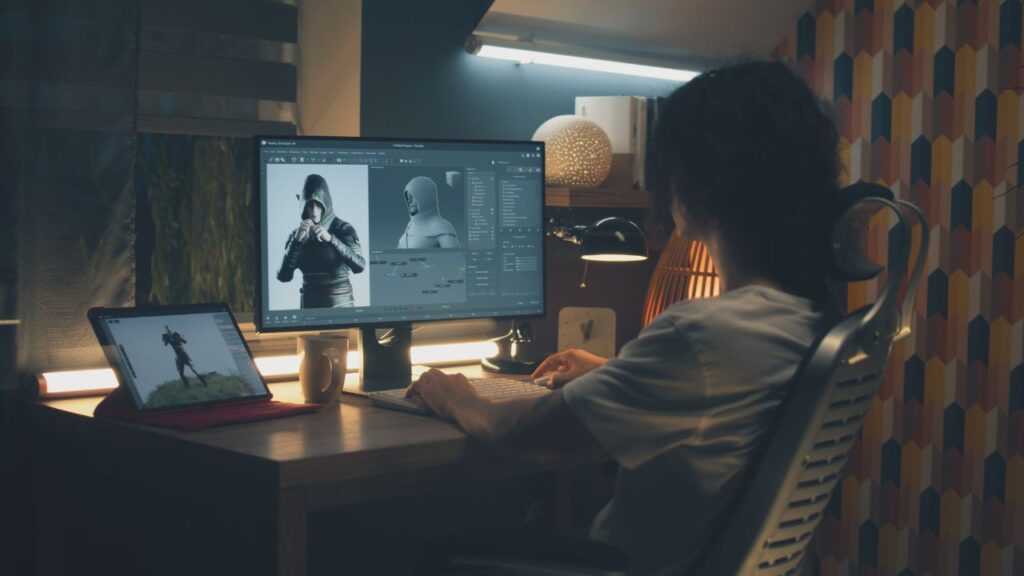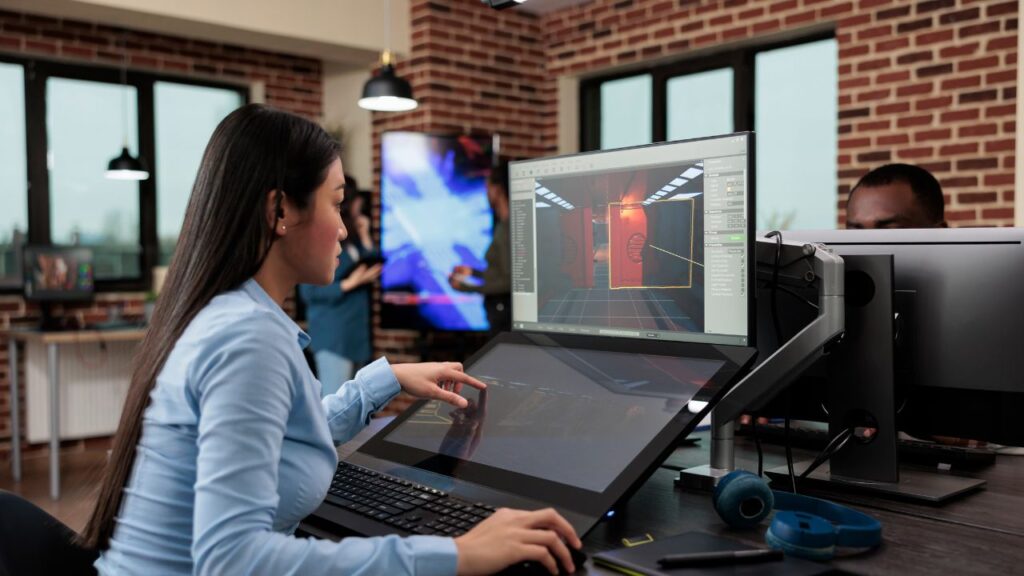Making games with friends can be tricky when you need the right tools and skills. Many people want to create multiplayer games but don’t know where to start or what platform to use. Roblox Studio makes this process much easier by giving creators everything they need to build games that multiple players can enjoy together.
Roblox Studio lets anyone create multiplayer games without needing advanced programming skills, making it perfect for beginners and experienced developers alike. The platform handles most of the complex networking automatically, so creators can focus on making their games fun instead of worrying about technical details. Players can jump right in and start building everything from simple racing games to complex battle arenas.
The best part about Roblox Studio is how it brings people together. Friends can work on the same project at the same time, test their games instantly, and share their creations with millions of players around the world. Whether someone wants to make a quick game for friends or build the next big hit, Roblox Studio provides all the tools needed to turn ideas into reality.
Why Choose Roblox Studio for Your First Multiplayer Game?
Building multiplayer games in Roblox Studio starts with setting up your project correctly and understanding how players connect to your game world. The platform handles most networking automatically, but you need to configure basic settings and understand the client-server model to create smooth multiplayer experiences.
How Do You Set Up a Roblox Studio Project?
Opening Roblox Studio reveals several template options for new projects. Players should select “Baseplate” for multiplayer games since it provides a clean starting point without extra features that might cause conflicts.
After creating the project, developers need to save it with a clear name. The “File” menu contains the save option, and choosing a descriptive name helps organize multiple projects later.
The workspace comes with basic lighting and terrain systems already active. These default settings work well for most multiplayer games without requiring changes.
Testing tools appear in the top toolbar. The “Play” button has a dropdown arrow that reveals multiplayer testing options. Selecting “Local Server” lets developers test with multiple players on one computer.
What Is Client-Server Architecture in Roblox?
Roblox uses a client-server model where one computer acts as the server and others connect as clients. The server controls the main game logic and keeps all players synchronized.
Server scripts run on the server and handle important game events. These scripts manage player data, game rules, and anything that affects all players. They use regular Script objects in ServerScriptService.
Local scripts run on each player’s device and handle individual player actions. These scripts control camera movement, user interfaces, and personal effects. They go in StarterPlayerScripts or StarterGui.
The server and clients communicate through RemoteEvents and RemoteFunctions. RemoteEvents send messages without expecting responses, while RemoteFunctions wait for replies.
Players cannot directly access other players’ local scripts. All shared information must pass through the server first.
How Do You Configure Player Settings?
The StarterPlayer service contains settings that apply to all players when they join. These settings control movement speed, jump height, and health values.
CharacterWalkSpeed determines how fast players move. The default value is 16, but multiplayer games often work better with slightly higher speeds around 20-25.
CharacterJumpHeight affects how high players can jump. Most multiplayer games use the default value of 7.2 unless the game requires special jumping mechanics.
LoadCharacterAppearance controls whether players spawn with their chosen avatar clothes and accessories. Setting this to false makes all players look identical, which works well for team-based games.
The StarterPlayerScripts folder holds LocalScripts that run for each player. Common scripts include camera controls, input handling, and UI management.
Teams can be added through the Teams service. Each team needs a name and color, and players can be assigned to teams through scripts when they join the game.
How Do You Build Rock-Solid Multiplayer Features?
Creating smooth multiplayer games requires mastering four key areas: networking events that connect players, data systems that keep everyone in sync, player action coordination, and thorough testing methods. These techniques form the backbone of any successful multiplayer Roblox game.
What Are Networking Events and Why Do They Matter?
Networking events handle communication between the server and players in a Roblox game. The server acts as the main hub that receives information from all players and sends updates back to everyone.
RemoteEvents let players send data to the server. For example, when a player jumps or shoots, the client sends this information to the server through a RemoteEvent.
RemoteFunctions work differently because they wait for a response. Players can ask the server for specific information, like their current score or inventory items.
The server processes all incoming data and decides what to share with other players. This prevents cheating since players cannot directly change game data on their own.
Developers should name their remote events clearly. Names like “PlayerJump” or “WeaponFire” help other developers understand the code better.
How Does Data Replication Keep Everyone Updated?
Data replication ensures all players see the same game state. When one player moves or performs an action, the server updates this information for everyone else.
The server stores important game data like player positions, health, and scores. It then sends updates to all connected players so they see the same things happening.
Filtering helps reduce network traffic. The server only sends relevant updates to each player instead of everything that happens in the game.
Players close to each other need frequent position updates. Players far apart might not need to know about each other’s small movements.
Game developers can use ReplicatedStorage for data that all players need to access. This includes things like game rules, maps, and shared resources.
ServerStorage keeps sensitive data that only the server should control. Player money, admin tools, and anti-cheat systems belong here.
Why Is Player Action Synchronization So Important?
Player action synchronization makes sure all players see events happen at the same time. Without it, players might see different versions of the same game.
The server receives actions from players and broadcasts them to everyone else. This creates a single source of truth for what happens in the game.
Lag compensation helps players with slower internet connections. The server can predict where players will be and adjust accordingly.
Client-side prediction lets players see their actions immediately. Their character moves right away, even before the server confirms the action.
The server validates all player actions to prevent cheating. It checks if moves are possible and rejects anything that seems wrong.
Timestamps help the server process actions in the correct order. Even if data arrives late, the server can put events in the right sequence.
What Testing Methods Work Best for Multiplayer Games?
Testing multiplayer games requires different approaches than single-player games. Developers need to check how the game performs with multiple players online at once.
Local testing in Roblox Studio lets developers simulate multiple players on one computer. This helps catch basic networking problems before publishing.
Server testing involves inviting friends or team members to play the game together. Real players often find issues that simulated testing misses.
Developers should test with different internet speeds and connection qualities. Some players have fast internet while others use mobile data or slower connections.
Stress testing checks how the game handles many players at once. Developers can gradually increase player counts to find the breaking point.
Edge case testing looks for unusual situations that might break the game. What happens if a player loses connection during an important action?
Keep detailed logs of any problems found during testing. Note what happened, how many players were online, and what actions triggered the issue.



